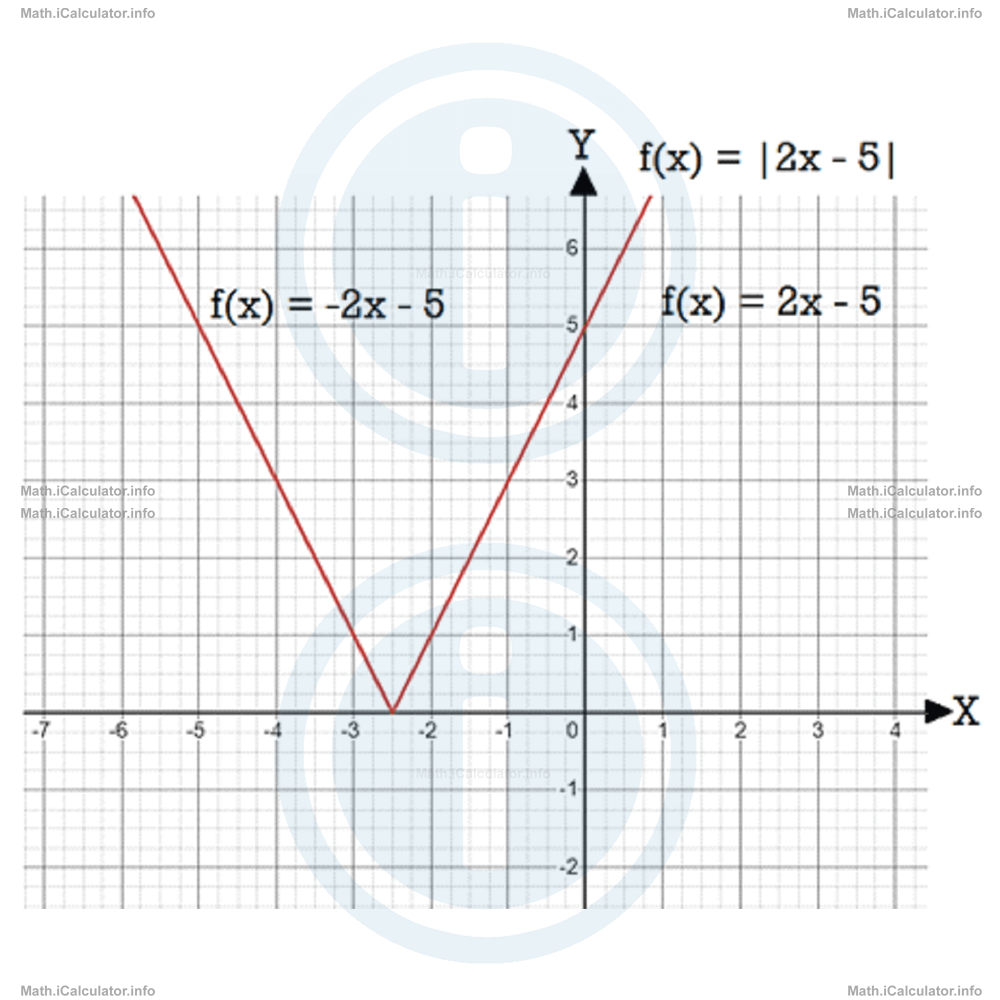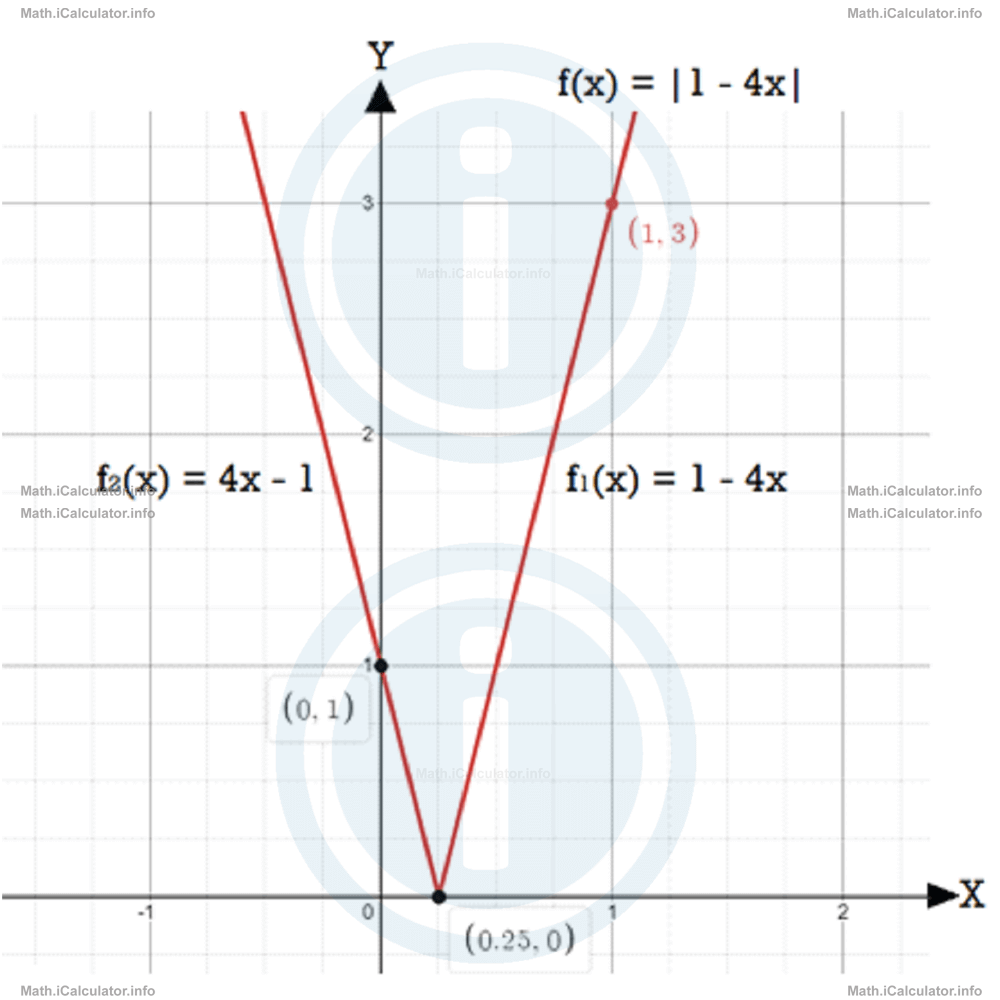Menu
Math Lesson 16.5.6 - Absolute Value Function as a Special Case of Piecewise Functions
Please provide a rating, it takes seconds and helps us to keep this resource free for all to use
Welcome to our Math lesson on Absolute Value Function as a Special Case of Piecewise Functions, this is the sixth lesson of our suite of math lessons covering the topic of Piecewise Functions, you can find links to the other lessons within this tutorial and access additional Math learning resources below this lesson.
Absolute Value Function as a Special Case of Piecewise Functions
When explaining roots in tutorial 7.2 we have briefly mentioned the concept of the absolute value of a number. It represents the distance of a number from the origin, regardless of the direction. In that tutorial, we have explained that the symbols (| |) indicate the absolute value of a number, i.e. its distance from the origin regardless of the direction in the number axis. Therefore, the absolute value of a number is always positive, as it shows only how far from the origin a number is, regardless of the direction. For example, |-5| = 5 because the number -5 is five units away from the origin (i.e. from zero). Likewise, | + 5| = 5 as well, because the distance of + 5 from the origin is also five units.
The same reasoning is also used when dealing with absolute value functions. Since the expression inside the absolute value can take two values - one positive and one negative - an absolute value function will split into two different parts according to the scheme below
where a is the value which makes the expression equal to zero. Therefore, absolute value functions can be considered as piecewise functions, given that they can be written in two parts.
For example, we express the absolute value function
as
or
The graph of such functions extends only in the positive part of the Y-axis and is symmetrical, where the Y-axis acts as a symmetry line, as shown below.

Example 7
- Write the following absolute value function as a piecewise one.f(x) = |1-4x|
- Plot the graph of this function.
Solution 7
- First, we must find the limit point. For this, we consider the positive part of the function, i.e. 1 - 4x = 0Hence, we write this function in the piecewise form as
1 = 4x
x = 0.25f(x) = 1 - 4x x ≤ 0.25-(1 - 4x) x > 0.25Rearranging the bottom part of this function yieldsf(x) = 1 - 4x x ≤ 0.254x - 1 x > 0.25 - We plot the graph of this function by taking the coordinates of two points for each of the lines, where one of the coordinates (the common one) is (0.25, 0). Thus, for the upper part of the function, we choose x = 0 and as a result, we obtain y = 1. Therefore, (0, 1) is a point of the graph. As for the bottom part, we choose x = 1 and as a result, we obtain y = 3. Therefore, (1, 3) is also a point of the graph. Connecting these points and extending the lines beyond them yields the graph shown below.

You have reached the end of Math lesson 16.5.6 Absolute Value Function as a Special Case of Piecewise Functions. There are 6 lessons in this physics tutorial covering Piecewise Functions, you can access all the lessons from this tutorial below.
More Piecewise Functions Lessons and Learning Resources
Whats next?
Enjoy the "Absolute Value Function as a Special Case of Piecewise Functions" math lesson? People who liked the "Piecewise Functions lesson found the following resources useful:
- Absolute Value Feedback. Helps other - Leave a rating for this absolute value (see below)
- Functions Math tutorial: Piecewise Functions. Read the Piecewise Functions math tutorial and build your math knowledge of Functions
- Functions Revision Notes: Piecewise Functions. Print the notes so you can revise the key points covered in the math tutorial for Piecewise Functions
- Functions Practice Questions: Piecewise Functions. Test and improve your knowledge of Piecewise Functions with example questins and answers
- Check your calculations for Functions questions with our excellent Functions calculators which contain full equations and calculations clearly displayed line by line. See the Functions Calculators by iCalculator™ below.
- Continuing learning functions - read our next math tutorial: Inverse Functions
Help others Learning Math just like you
Please provide a rating, it takes seconds and helps us to keep this resource free for all to use
We hope you found this Math tutorial "Piecewise Functions" useful. If you did it would be great if you could spare the time to rate this math tutorial (simply click on the number of stars that match your assessment of this math learning aide) and/or share on social media, this helps us identify popular tutorials and calculators and expand our free learning resources to support our users around the world have free access to expand their knowledge of math and other disciplines.